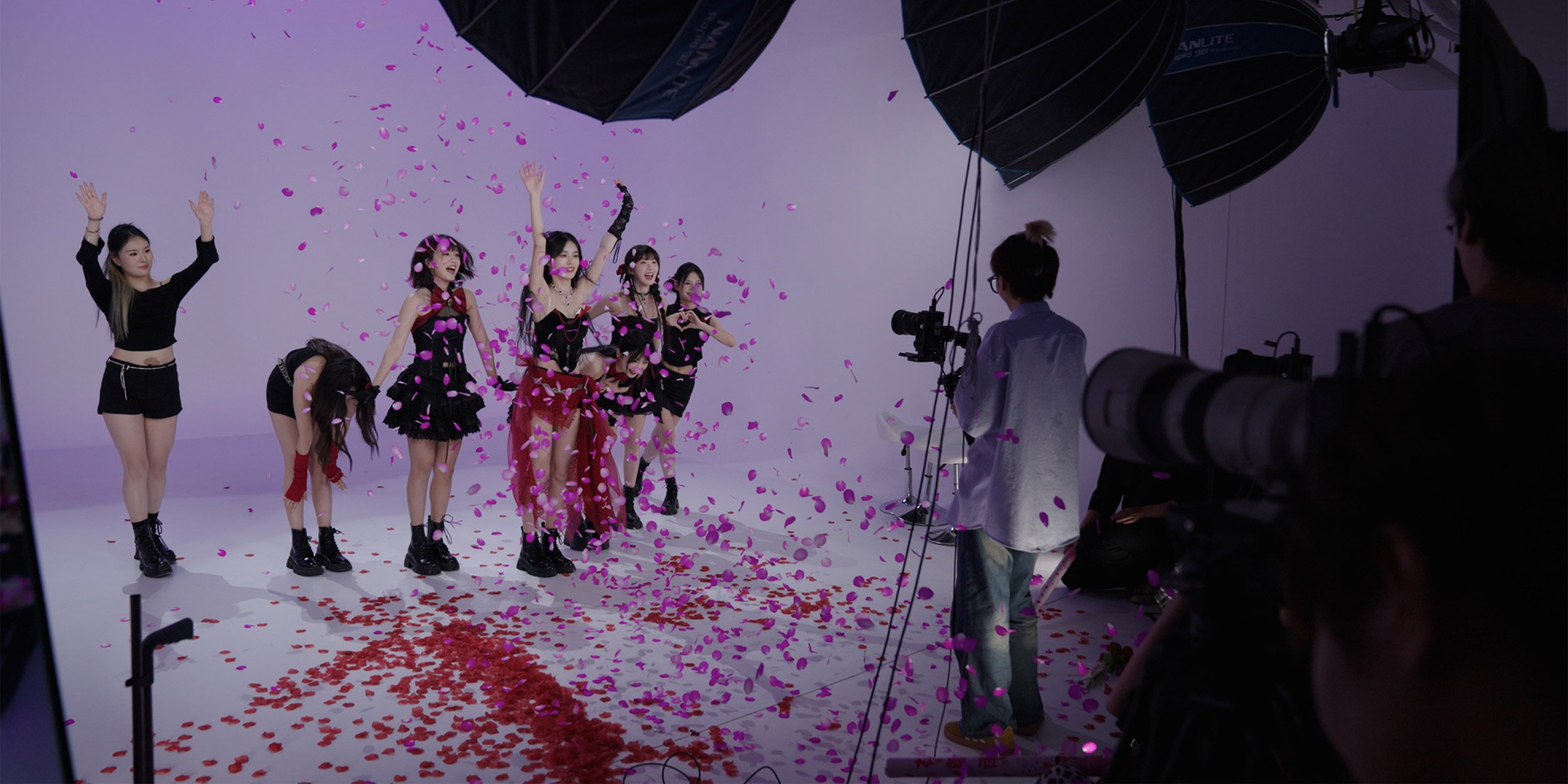While Apple is busy dropping 3,500 USD headsets that make you look like you’re cosplaying a sci-fi movie, Chinese tech companies are quietly revolutionizing wearable tech with smart glasses that actually look… normal? Like, the kind you could wear to brunch without your friends staging an intervention. The future of tech isn’t just about who has the most processing power—it’s about who can make innovation blend seamlessly into our daily lives. And right now, China is eating everyone’s lunch, as evidenced by the plethora of advanced eyewear at the recent BEYOND Expo 2025 in Macau.
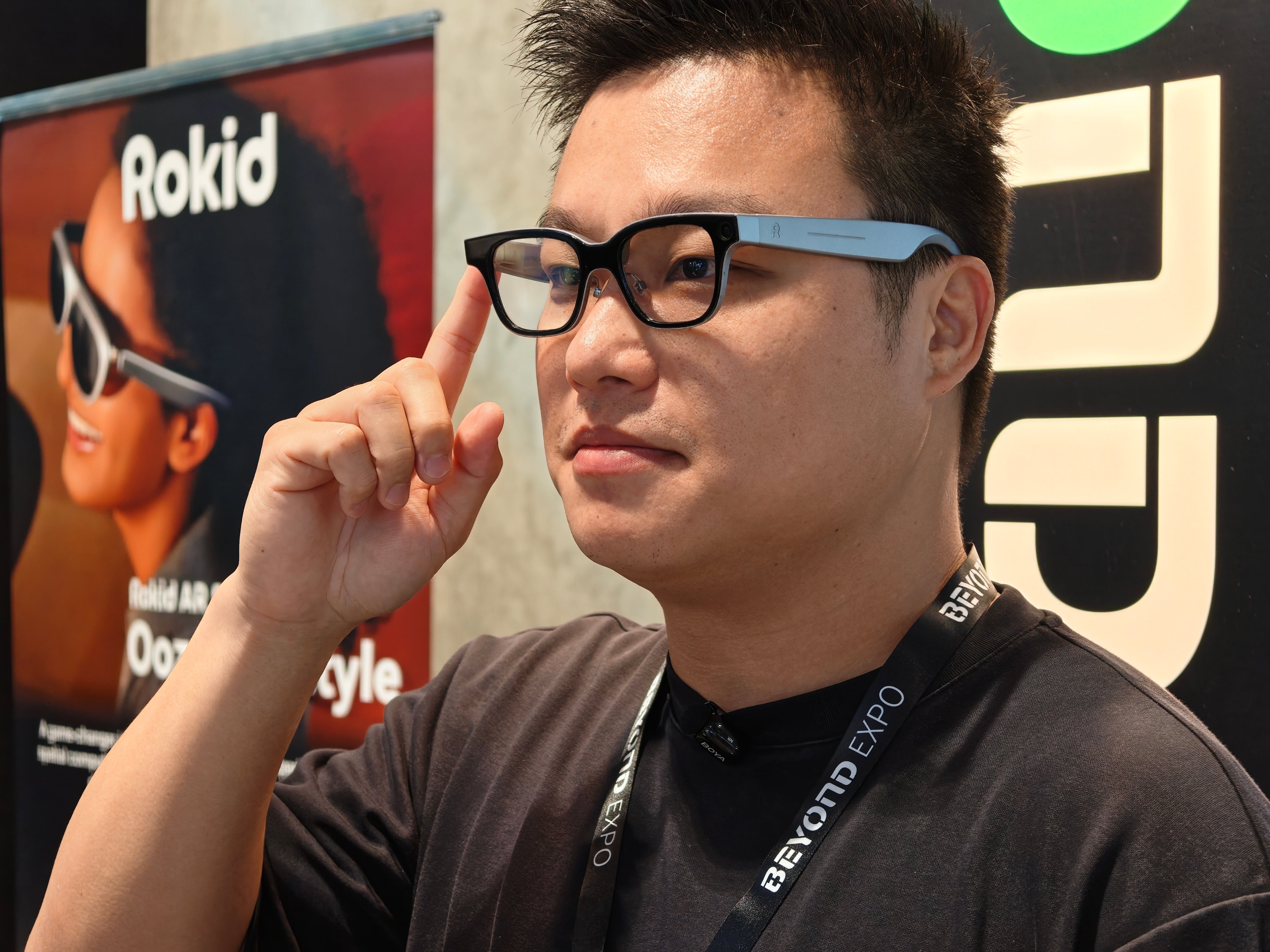
These aren’t just fashion accessories with a camera and speakers slapped on. These are fully functional smart devices that leverage AI and advanced displays, while maintaining a form factor that won’t make you look like you’re auditioning for The Matrix.
The real game-changer here is something called “diffraction waveguide imaging technology.” Sounds complicated, but the concept is simple: these glasses project a green monochrome display onto each lens, creating a personal heads-up display that only you can see. It’s like having a small screen floating in front of you, but without the neck strain or the social faux pas of constantly checking your phone.
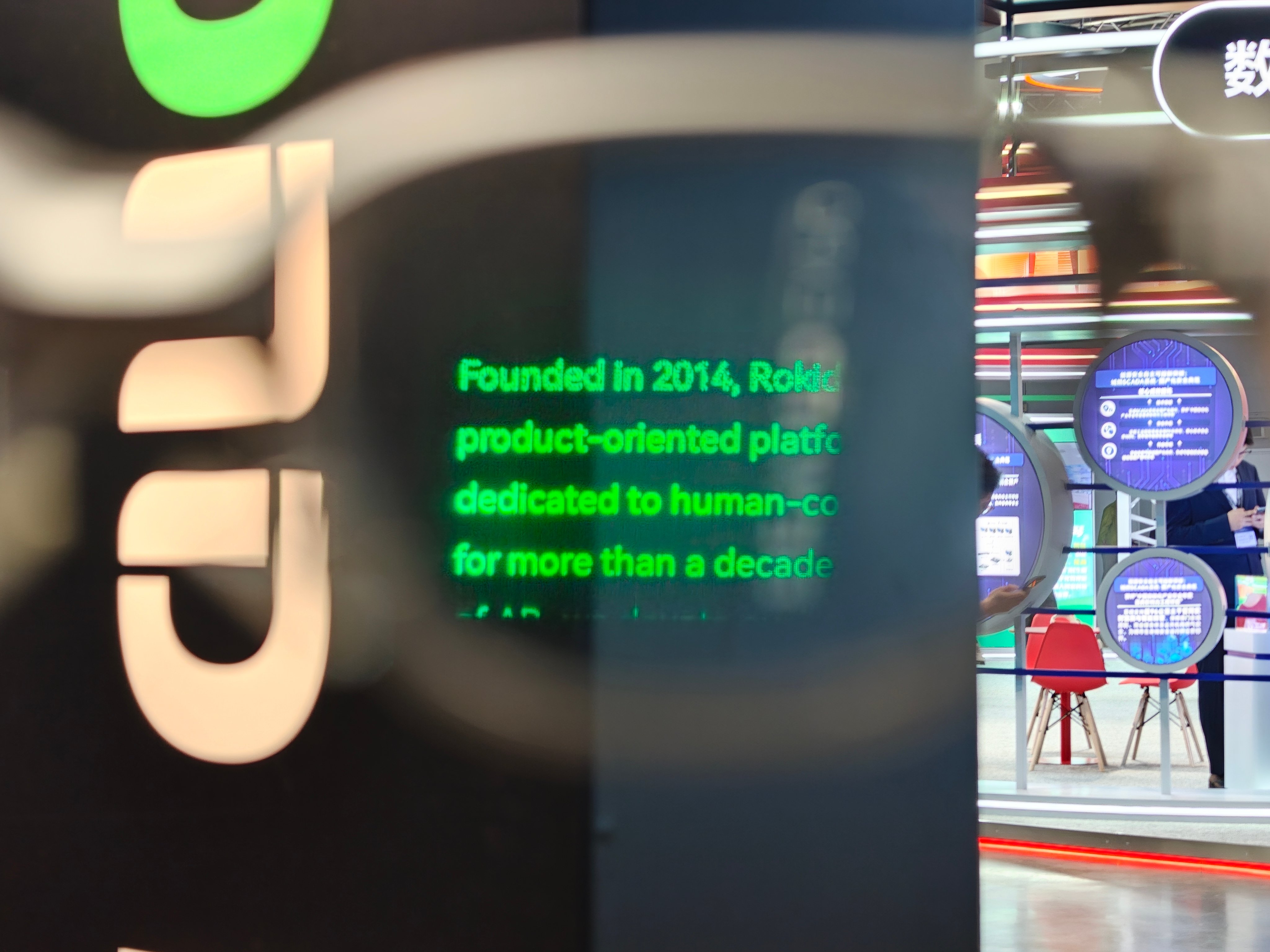
The Rokid Glasses we tried on at BEYOND Expo exemplify this approach. The Hangzhou company managed to create lightweight and stylish eyewear that subtly delivers information right to the lenses. Outsiders would only notice a slight, green hue on the projection areas at certain angles. While it’s a simple green interface, it’s more than enough to run notifications, live translation, teleprompter, navigation, and AI object recognition via a 12-megapixel camera, which can shoot photos and videos as well. Given that the Rokid Glasses don’t need to be plugged into a phone, they are surprisingly capable and intuitive to use through a simple swipe and tap on the frame’s right arm. Just think of these as a pair of beefed-up Ray-Ban Metas. If needed, you can attach clip-on prescription lenses on the inner side.

Meizu’s StarV Air2 takes things up a notch with a smart ring remote control. Imagine giving a presentation with your notes discreetly displayed in your field of vision, controlled by subtle finger movements on a ring. No more awkward glances at note cards or forgetting your talking points. This “cheat sheet” feature alone makes these worth considering for content creators, public speakers, or anyone who’s ever blanked during a presentation.
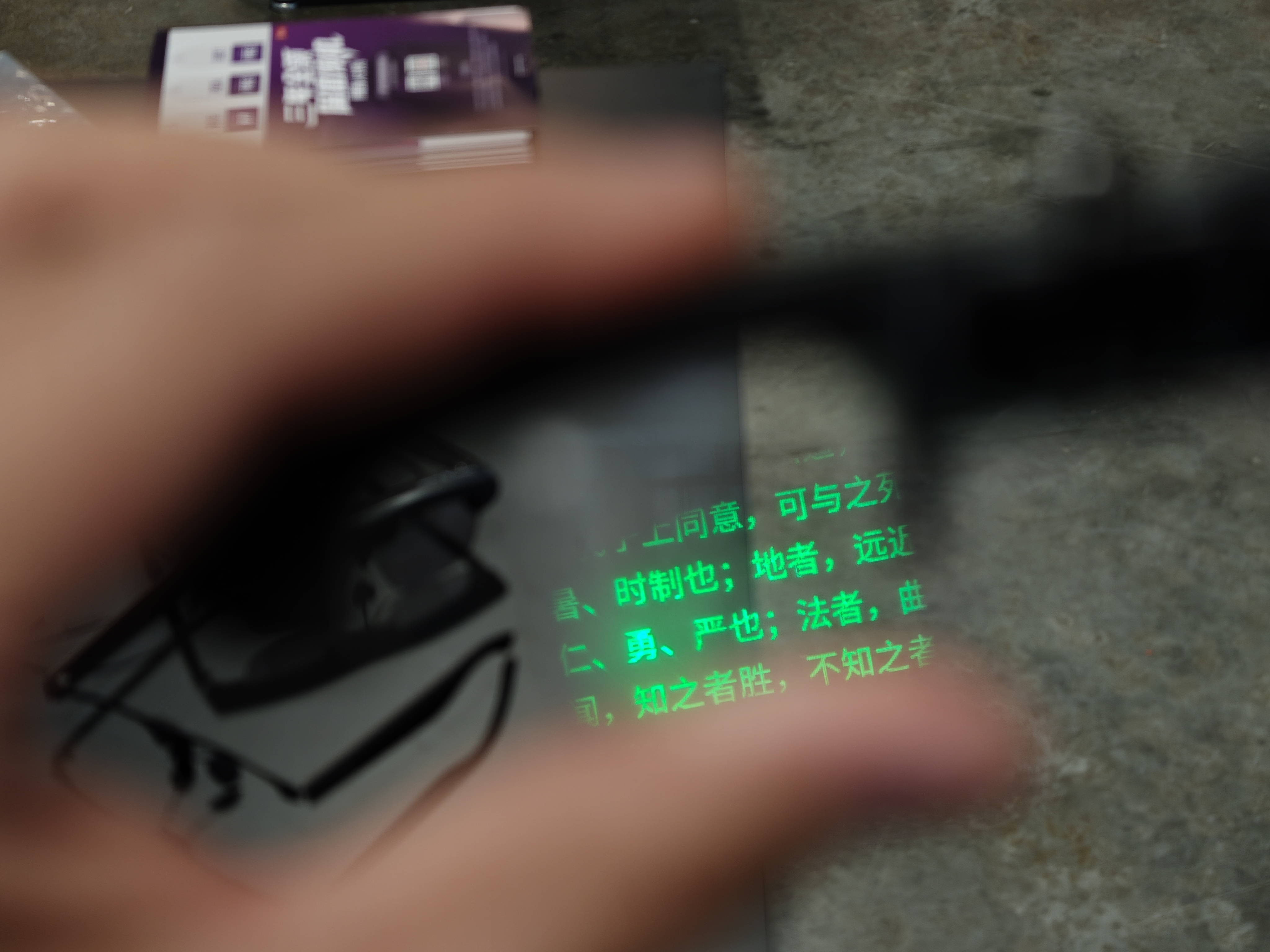
For those who already wear prescription glasses, Microlumin’s MLVision M5 is a clip-on solution that’s also more affordable. No need to choose between seeing clearly and having smart features; you can have both without breaking the bank. We’re talking about 1,999 RMB (around 280 USD), which is cheaper than the Rokid’s 2,499 RMB (around 350 USD) and the Meizu’s 2,799 RMB (around 390 USD). But only the Rokid has a camera, which is what you need to go full-on J.A.R.V.I.S.
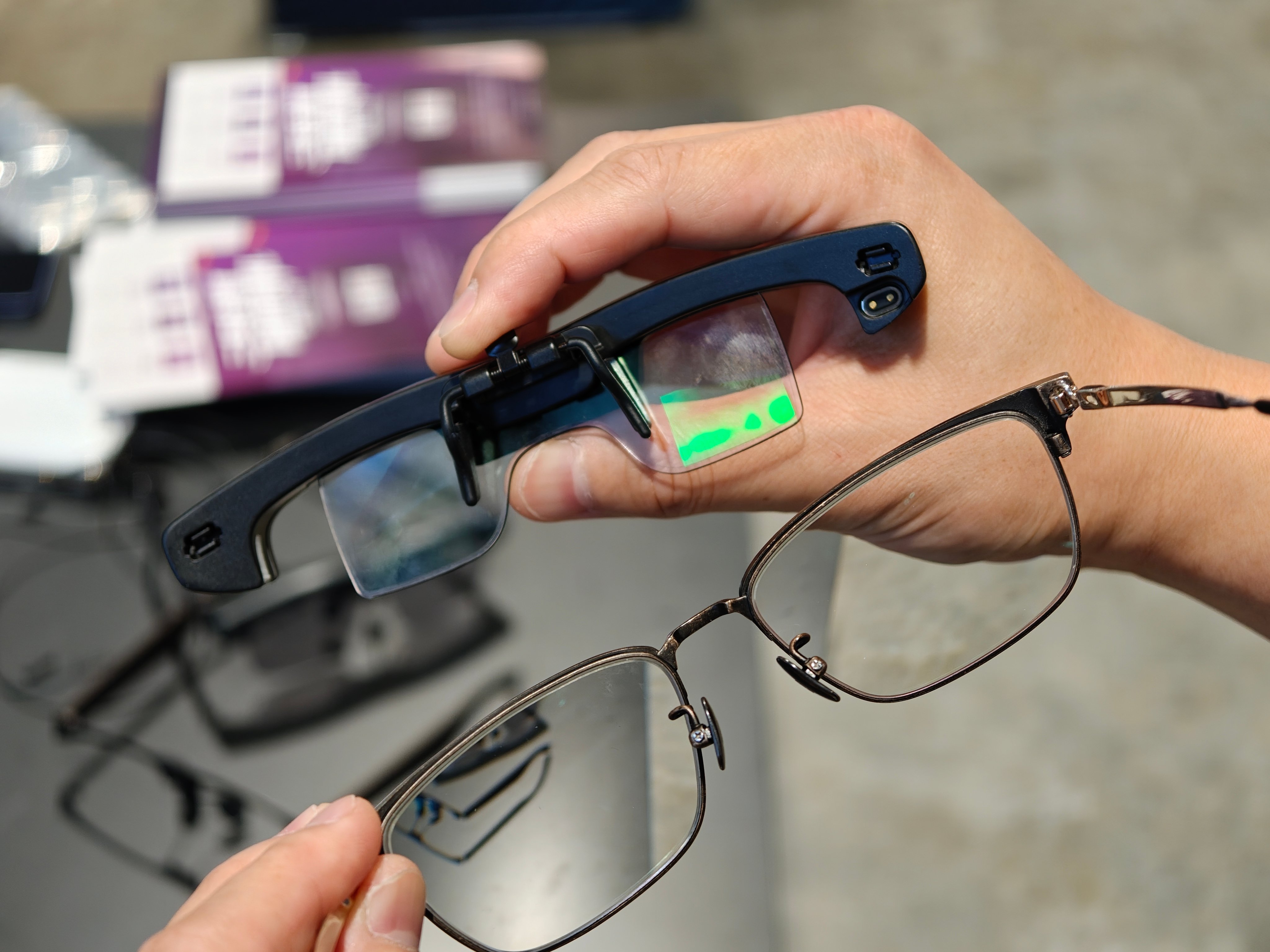
The innovation doesn’t stop with the brands at BEYOND Expo. Halliday, another Chinese company, has taken a different approach with green MicroLED projection through a tiny microscope in the upper part of the right frame. Instead of projecting onto the lens itself, you glance up to see the display. This eliminates the slightly odd glow that can sometimes be visible on waveguide glasses, though it might get tiring to constantly look up for information. The Halliday Glasses start from 369 USD, which is comparable to their main competitors, but they also lack a camera.
With the rise of advanced AI models like GPT-4 and their Chinese counterparts, these glasses could soon become the perfect hardware interface for our increasingly intelligent digital assistants. The combination of AI and wearable tech means we’re approaching a world where your personal assistant isn’t just in your pocket; it’s constantly in your field of view, ready to help without you having to pull out a device each time.

What’s particularly impressive about these Chinese smart glasses is how they’ve managed to balance technology with aesthetics. Unlike the clunky AR/VR headsets from the past, these devices actually consider style as a core feature, not an afterthought. This marriage of fashion and function is crucial for mass adoption. No matter how cool the technology is, if it makes you look like a clunky cyborg, most people won’t wear it in public. Chinese manufacturers seem to understand this societal truth from the get-go.
The rise of Chinese smart glasses represents something bigger than just cool gadgets. It signals a shift in the global tech landscape. For decades, the narrative has been that innovation flows from Silicon Valley to the rest of the world. But these smart glasses demonstrate that innovation is now a two-way street. Chinese companies are pioneering new approaches and, in some cases, leapfrogging their Western counterparts. This could lead to a more balanced global tech ecosystem where good ideas flow freely between East and West, benefiting consumers everywhere.
While Meta continues to work on prototypes with more advanced display technology (that’s currently too expensive for most consumers), Chinese companies are delivering practical solutions today. They’ve recognized that “good enough” technology that people will actually use is better than perfect technology that stays in the lab.
As Gen Z enters the workforce and reshapes consumer technology, these smart glasses represent the kind of practical innovation that could define the next decade. They’re not trying to create a whole new reality like VR. They’re enhancing the one we already live in. Whether you’re navigating a new city, creating content, or just trying to stay connected without being glued to your phone, these Chinese smart glasses offer a glimpse into a future where technology becomes almost invisible, seamlessly integrated into our daily lives.
The question isn’t whether smart glasses will become mainstream; it’s whether Western companies can catch up to their Chinese counterparts before they miss the boat entirely. Alternatively, the two sides can work together, as is the case with Google and Beijing’s XREAL over the recently announced “Project Aura” AR glasses, which will set the benchmark for the next wave of AI-powered smart eyewear. Either way, the winner will be consumers who get to experience the future of wearable tech, without looking like they just stepped off a spaceship.
Cover image via Rokid.













